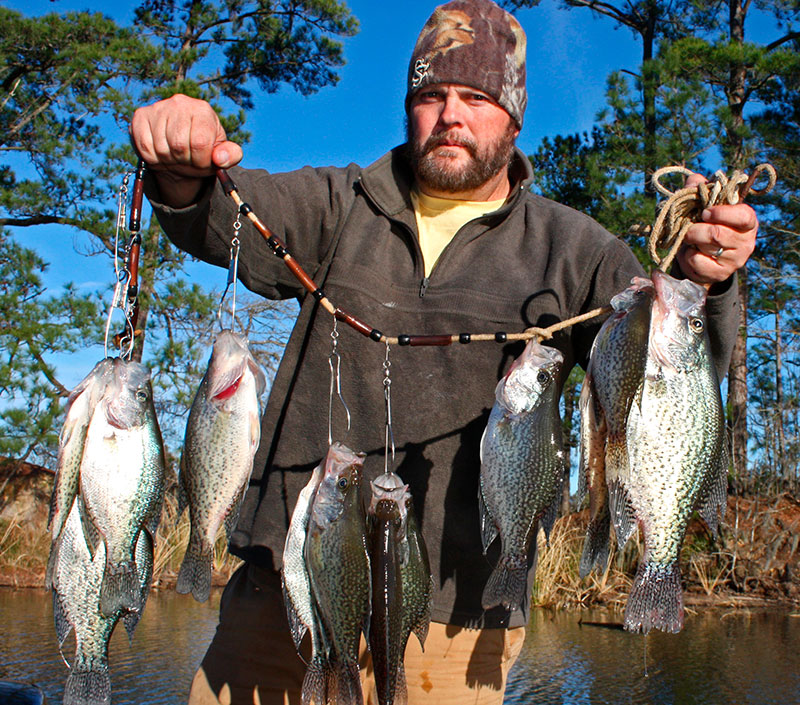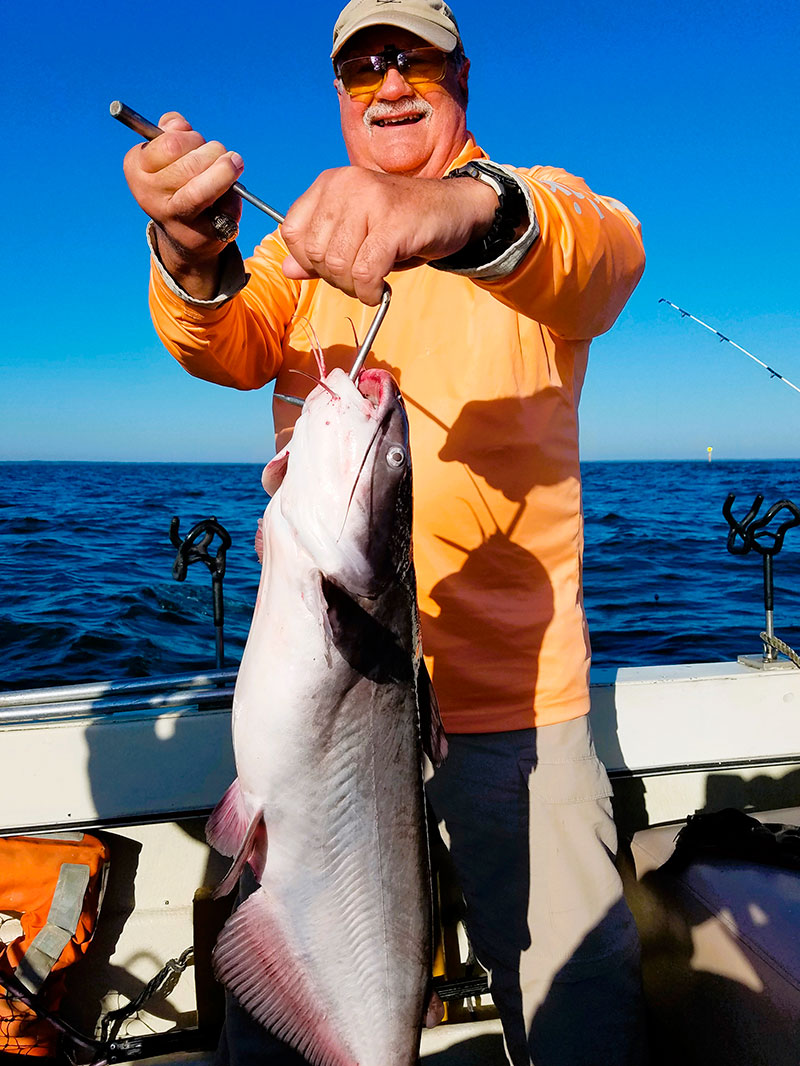
Old man winter still has an icy grip on the weather at the outset of February, but his grip loosens as the month progresses. The trend is typically for warmer weather, and higher water temperatures. This prompts the winter fishing to transition from winter to early spring patterns. Even in February, some fish species at Santee Cooper are already a bit shallow-minded.
Slabs go shallow
Crappies are certainly making a big move to the shallows in the long-term outlook that begins in February. While the major push is typically in March for much of the Santee Cooper system, movement toward the shallows begins this month.
Winter crappies typically suspend over ledges and deep brush. But as February progresses, these fish begin to move shallower. By mid- to late February, crappie anglers are working brush and woody cover in the 10- to 15-foot depth range or even shallower. Many of these crappies are huge, roe-laden sows.
Former guide Kevin Davis of Cross, SC said the biggest crappies are often the first to make a major move early in the season.
“The numbers of big fish may not rival what we’ll experience during March, but certainly some of the biggest crappies of the year show up in February,” he said.
Davis said crappie anglers work brush and woody cover in the 10- to 15-foot depth range. And depending on water temperature, many are even shallower by the end of the month.
“Fishermen are often making good catches of crappie by longline trolling late in the month,” he said. “That’s dependent on water temperature, but late-February longlining can produce slabs.”
Davis said two other basic fishing techniques are effective. One is the tightline rig with jigs, minnows or a jig/minnow combo worked over and around and even into the brush. A second is to anchor just off the target and cast jigs to the target. Both techniques will pinpoint large concentrations of slab crappie at this time of year. But it often means having to move to several potential targets before finding a concentration of fish.
Lake Moultrie has mid-depth to shallow water opportunities in the many canals and slightly deeper ditches around the lake. These spots provide a deep-to-shallow-water-access that attracts early season slabs.

Guide Joe Dennis (843-245-3762; Capt. J-Hook Charters) said one productive February technique is to cast a small jig, on light line, around shallow cover.
“A slow steady retrieve is best, and allows the lure to free-fall a couple of times during the retrieve,” he said. “Watch the line for a twitch, indicating a bite, as it falls. And anglers should check different depths of water for a daily depth pattern.”
Cats go shallow
The catfish bite is often excellent in February. The bite is literally good from shallow water to very deep water. Weather plays a big role in where anglers find fish on a given day.
With ample forage still in deep water early in the month, the deepwater bite is good by drift fishing these forage-rich environments, or vertical fishing around the pods of bait.
But as the American shad and saltwater herring begin to move into the lakes in February, the shallow water bite perks up. Shallow-water catfish action becomes a real thing, with big blues in very skinny water.
The key is usually to follow the forage when you’re looking for catfish. And one type of forage that should not be overlooked, is mussels. Both lakes are full of shallow water mussel beds. These can be prime targets for February cats.
When a front blows through the area, the windy banks can provide good shallow-water action. The post-frontal conditions can push the cats deeper, but often not as far as some might think.
Early Stripers
Stripers are on the move in February, responding to their natural urge to spawn. These fish move upstream instead of toward the shallows. And for many stripers, the upper end of Lake Marion and into the Wateree and Congaree rivers is the destination.
Steve Pack at Packs Landing (803-452-5514) said stripers typically begin to reach the upper end of Lake Marion in late February.
“Water flow and weather influence striper action in the river, And the big push of stripers upstream turns on by early March,” Pack said. “But some big stripers move through in February. It takes some patience, because we won’t get as many bites. But we have very good opportunities for big stripers in late-February.”
Crappie, cats and stripers:
February may seem just like another winter month to humans, but to crappie, catfish and stripers, it’s time to head shallow, or at least to begin moving toward shallow water to prepare for the spring spawn.


Be the first to comment